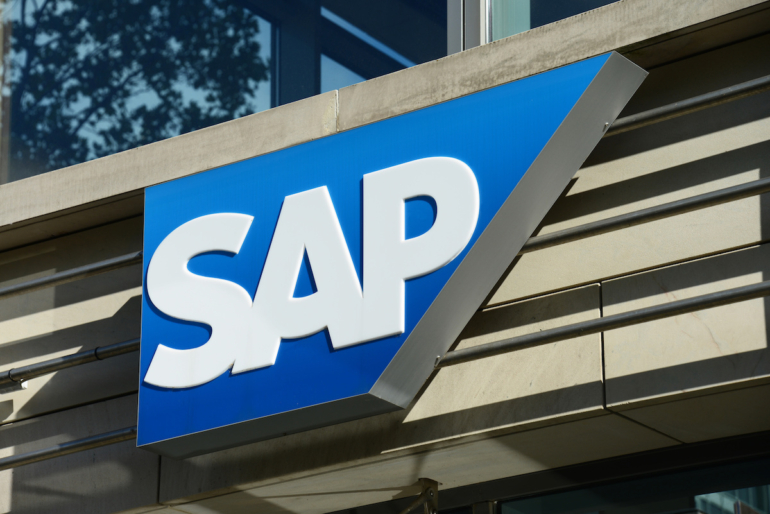
SAP Commerce Cloud, SAP’s e-commerce platform, was one of the most visible products at the National Retail Federation’s 2023 conference, held Jan. 14-16, 2023 in New York City. From interoperability with other products and organizations to SAP’s own demonstrations, their influence is wide-ranging. We sat down with Balaji Balasubramanian, senior vice president and global head of commerce cloud, to talk about the state of the cloud for the retail industry today.
Jump to:
What is SAP’s Commerce Cloud?
SAP’s Commerce Cloud is disambiguated from the organization’s other offerings because of its focus on e-commerce. It offers a commerce platform for B2B, B2C, direct-to-consumer, marketplace and more.
SEE: Hiring Kit: Cloud Engineer (TechRepublic Premium)
What is unified commerce?
Unified commerce was an important buzzword at NRF this year, but it can be difficult to define. What used to be called multi-channel commerce is now often called unified commerce. In essence, the shopper should be directed into the same funnel no matter where they start looking for a product.
“Unified commerce on the first level means I stitch through the experience for my shoppers in a way that doesn’t have seams across these channels,” Balasubramanian said.
This is useful to large organizations like SAP that operate across the world and across markets, brands, languages and currencies. It unifies shopping experiences no matter whether a prospective customer walks into a store or visits a website.
The pandemic also created a shift — organizations want to reach directly to consumers in lockdown very quickly. It integrates business models under one e-commerce platform that have traditionally been separated.
Enterprise cloud experiences
Today’s enterprises need to be able to have flexibility to adapt to a cloud service that integrates customer experiences, Balasubramanian said. The developer team can be flexible with a product like SAP’s Commerce Cloud as long as they have the right experience and organizational structure. SAP offers full-stack business technology platforms so that developers can work in the way they want within SAP’s cloud services.
“You can write code as a dev in your favorite environment,” Balasubramanian said. “We provide tooling and runtime.”
He described the cloud offering as three distinct sections: Configuration (for quickly setting up), no code and low code, and professional coding, where in-house developers write their own code and SAP provides their tooling. For no code and low code circumstances, the autosuggest for code can also add to productivity intelligence and efficiency.
What is changing in retail?
According to Balasubramanian, this flexibility in terms of what enterprise developers want and need reflects the flexibility customers want.
“On one hand, we all know that the consumer demands or shopper demands are changing,” he said. “Amazon and others have taught all the shoppers to expect full end-to-end from discovery to post-purchase. They need to have flexibility and convenience across the board.”
With this comes parallel demands placed on the supply chain. The challenge today, SAP finds, is not getting customers to purchase but instead to be sure the inventory is correctly allocated.
“Our retailers need to deliver a more transparent supply chain so the customer knows what is going on,” Balasubramanian said. “They need to deliver a more efficient supply chain, and they need to think about doing it in a sustainable manner.”
Brand loyalty is also important. Gen Z shoppers do have a sense of brand loyalty, he said, but it may look different from that of other generations. Instead of focusing on discounts and prices, it may be about where the company sources their products, sustainability, personalization and experience.
For businesses, personalization means knowing who customers are and what they have purchased before. That may include real-time customer profiling. The end goal is to personalize every touchpoint along the shopping journey, so this personalization might extend to inviting influential customers to events.
Addressing supply chain problems
All of this — customer experience, sustainability and the day-to-day experience of customers getting products in the time frame they expect — comes back to the supply chain.
“There’s even more pressure for things to operate in a hands-off manner,” Balasubramanian said.
COVID-19 created chaos in the supply chain, but other, smaller-scale problems have also catapulted supply chain delays into water cooler conversation. The six-day delay when the container ship Ever Given ran aground in the Suez Canal also made the mainstream news.
For retailers, resilience is the key. Effective automation from sourcing to intelligence can help with that. Supply chains need transparency, Balasubramanian continued.
One way to get this is the internet of things. IoT-enabled sensors can enable organizations to be proactive, notice average lead times and learn when something is likely to go wrong. Balasubramanian held up Uber’s real time visibility as an example of the type of tracking that retailers would like to see in the supply chain. In that case, the IoT product will need to send sensor data to the cloud.
Connectivity like this can also enable flexibility. If one supplier in one company can’t deliver because of an unexpected problem, the retailer needs to see whether a different company can as quickly as possible.
Overall, other organizations at NRF discussed similar challenges. Wiliot attempts to solve supply chain woes by improving tracking tags, while Google Cloud reflects on economic uncertainty.
